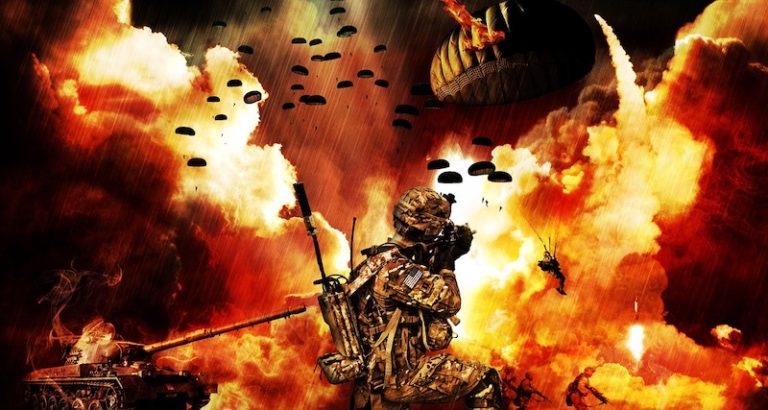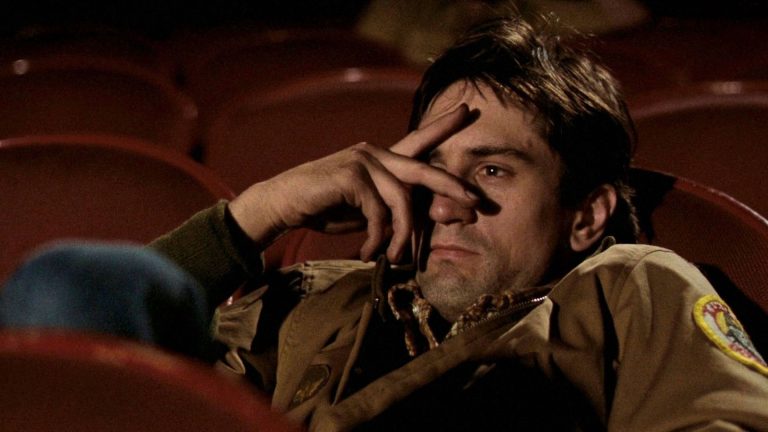16 Military Phrases and Cliches That Screenwriters Need to Stop Using

What are the most overly or improperly used military phrases and cliches that screenwriters should stop using within their screenplays?
Military themes, characters, and storylines are prevalent in many movies and television shows. They are some of the most intriguing topics and character types for audiences because they exist in a world and setting that most can't relate to — thus, audiences are engaged.
However, this has led to overly and improperly used phrases, cliches, and tropes that have either ran their course or don't represent real-life situations, scenarios, and terminology within the military world.
The best of screenwriters do their research to find contemporary military lingo while lesser screenwriters rely solely on past movie and television show representations, which leads to unrealistic falsities and, yes, some angry and annoyed men and women who have served their country well.
While there is certainly room for creative liberty, we've collected military phrases and cliches — from active soldiers, officers, military personnel, and veterans — that screenwriters can avoid to create a more authentic military-driven screenplay.
Authenticity is always an added value within any screenplay.
1. "Get Some!"
Used more so in contemporary war movies, this phrase has been done to death by Hollywood. When a soldier is in a firefight, they're trained to focus on the task at hand. Their life and their brothers and sisters around them depend on it.
2. "Lock and Load."
This is usually uttered by a Platoon Seargent or whatever rank variation before a firefight. The line was perhaps made famous for military-themed movies after one of the greatest war movies utilized it — Platoon. According to sources, it's unrealistic. Nobody says that.
3. "Stay Frosty."
This is a phrase uttered within the realm of wartime soldiers, even in recent years. It denotes that someone is being told to stay focused and ready. Since the widely acclaimed Generation Kill HBO miniseries utilized the phrase back in 2007, it has been in numerous military-themed movies and shows. It's dated and isn't used as widely anymore.
4. "Cover Me. I'm Going In."
Soldiers train endlessly. The formations and techniques they use during firefights are embedded within their mind to the point that it is second nature. The notion of someone performing some John Wayne sacrifice is unrealistic.
5. "We've Got Company!"
Most veterans roll their eyes at the scenes where soldiers see a threat and declare this obvious observation. First off, in combat, you often don't see the threat until it is unleashing its wrath upon you. Secondly, the proper information is usually shared quickly, as opposed to this overly vague statement.
6. "Don't You Die on Me!"
We've seen it time and time again. The Medic or fellow soldier is struggling to save a brother that's been shot. In a panic, they utter this painfully overused line of dialogue. In a real situation, fellow soldiers will keep their brother or sister calm and be focused on what they were trained to do in that situation. It's dramatic, yes. But when you've seen it over and over in multiple movies and shows, it's almost comical.
7. "That's An Order!"
One of the most overused lines of dialogue in military-themed films. A Commanding Officer issues an order to a defiant soldier. He or she stands still for a brief moment of contemplation. Then the CO screams, "That's an order!" Well, it's obvious that what a CO tells you to do is an order. No CO will exemplify their order by saying, "That's an order!"
8. "It's Going to Blow!"
For some reason, writers feel the need to have a character scream this before something blows up.
9. "Over and Out."
Over means that they have finished transmitting and are now awaiting a response. Out means they have finished transmitting, and no response is necessary. No one says, "Over and out."
10. Suppressors Not Silencers
The idea that a firearm with a silencer on it is soundless when shot is fictional.
The military does utilize sound suppressors for certain operations. But they are still loud enough to detect. Bullets do break the sound barrier, mind you.
Flash suppressors reduce the visible muzzle flash when they are fired. This helps to avoid detection.
But there is no such thing as a silencer that makes weapons silent. If you're in the other room or down the hall, you're going to hear it.
Learn how to master the art of the rewrite with this free guide.
11. Tactical Radio Terminology Used in Regular Conversation
Some veterans even say that the radio terminology thought to be legit by screenwriters and filmmakers isn't even used on the radio, let alone applying radio and tactical terminology in regular conversation off the field.
12. Going AWOL
In The Hurt Locker, James goes AWOL to avenge someone's death. In many military screenplays, this type of scene or sequence can be found. Even if the soldier is in the right, in real life, they would be prosecuted under the Uniform Code of Military Justice. While it may be dramatic, it's very unrealistic to have your characters going AWOL for the greater good.
13. Shooting Live Rounds at Soldier's Feet
That scene where a Drill Instructor, Commanding Officer, or Weapons Trainor is trying to make an effect on soldiers by firing bullets near them. First off, this is highly illegal in the military. Secondly, there would be a high probability of one of those bullets (or a fragment) hitting a soldier.
14. Characters Walking Away Slowly from Fireball Explosions Behind Them
There are these things called shrapnel and concussion blasts.
15. Seemingly Unlimited Ammunition
We see this a lot in action movies. According to an Iraq and Afghanistan era veteran, the average "grunt" carries seven thirty-round magazines (two hundred and ten rounds total). If they also carry a sidearm, they usually have an additional forty-five rounds.
When we see soldiers shooting on automatic for an extended period, it's unrealistic.
16. Defcon Alerts
The Defense Readiness Condition — i.e. Defcon — alerts are utilized incorrectly in many movies and television shows.
Defcon 5 is often mistakingly referred to as the highest state of alert for the United States Armed Forces. Defcon 1 is actually the highest state of alert.
- DEFCON 5 (code-named FADE OUT): Lowest state of readiness — the normal state of readiness in peacetime.
- DEFCON 4 (code-named DOUBLE TAKE): Increased intelligence watch and strengthened security measures.
- DEFCON 3 (code-named ROUND HOUSE): Increase in force readiness above that required for normal readiness. Air Force ready to mobilize in 15 minutes — the first true heightened phase of all the levels.
- DEFCON 2 (code-named FAST PACE): War is imminent. Armed Forces ready to deploy and engage in less than 6 hours — the highest level ever reached in history.
- DEFCON 1 (code-named COCKED PISTOL): Nuclear war is imminent.
Creative license is inescapable in movies and television because screenwriters and filmmakers are tasked with telling the most dramatic and cinematic story for the screen.
Authenticity will never be 100% in any screenplay when it comes to the portrayal of the military. But that doesn't mean that screenwriters can't do their best to avoid the tropes, cliches, and improperly used terminology, phrases, and moments.
Read ScreenCraft's 35 Most Overused Lines of Dialogue in Screenplays!
Ken Miyamoto has worked in the film industry for nearly two decades, most notably as a studio liaison for Sony Studios and then as a script reader and story analyst for Sony Pictures.
He has many studio meetings under his belt as a produced screenwriter, meeting with the likes of Sony, Dreamworks, Universal, Disney, Warner Brothers, as well as many production and management companies. He has had a previous development deal with Lionsgate, as well as multiple writing assignments, including the produced miniseries Blackout, starring Anne Heche, Sean Patrick Flanery, Billy Zane, James Brolin, Haylie Duff, Brian Bloom, Eric La Salle, and Bruce Boxleitner. Follow Ken on Twitter @KenMovies
For all the latest ScreenCraft news and updates, follow us on Twitter, Facebook, and Instagram.
Tags
Get Our Screenwriting Newsletter!
Get weekly writing inspiration delivered to your inbox - including industry news, popular articles, and more!



























